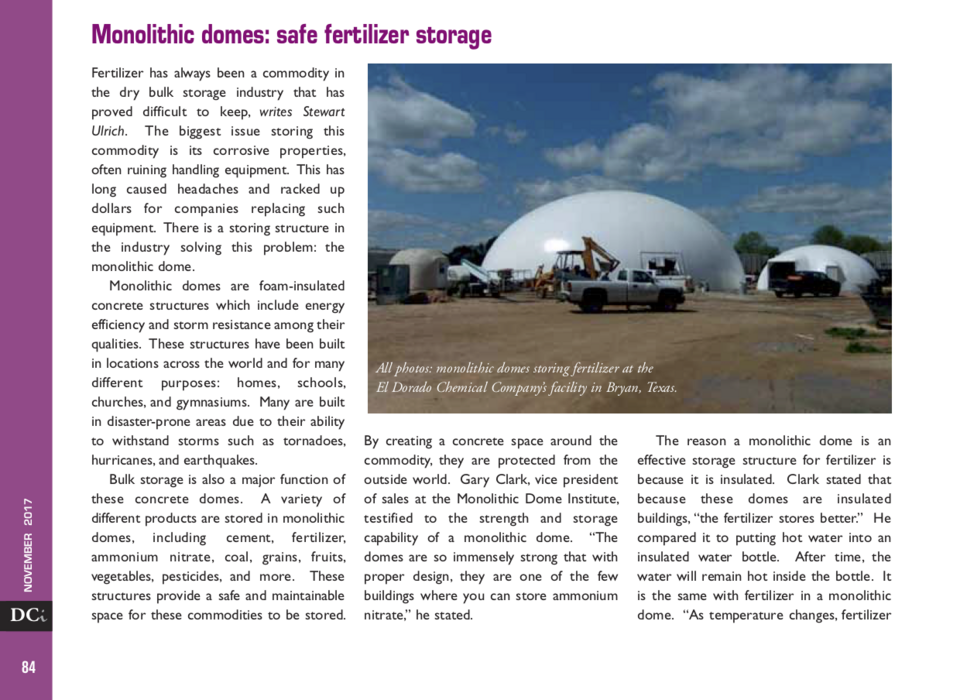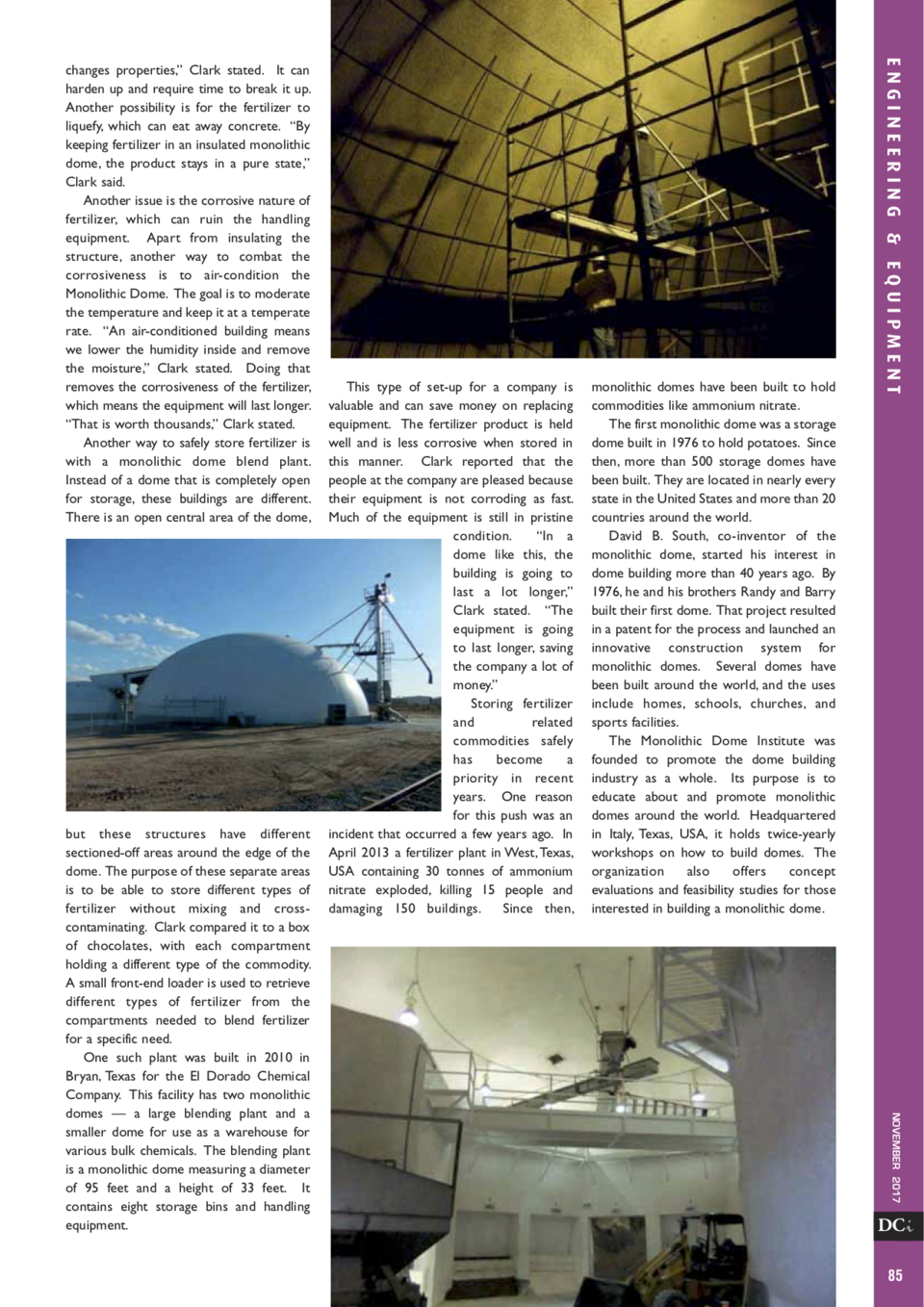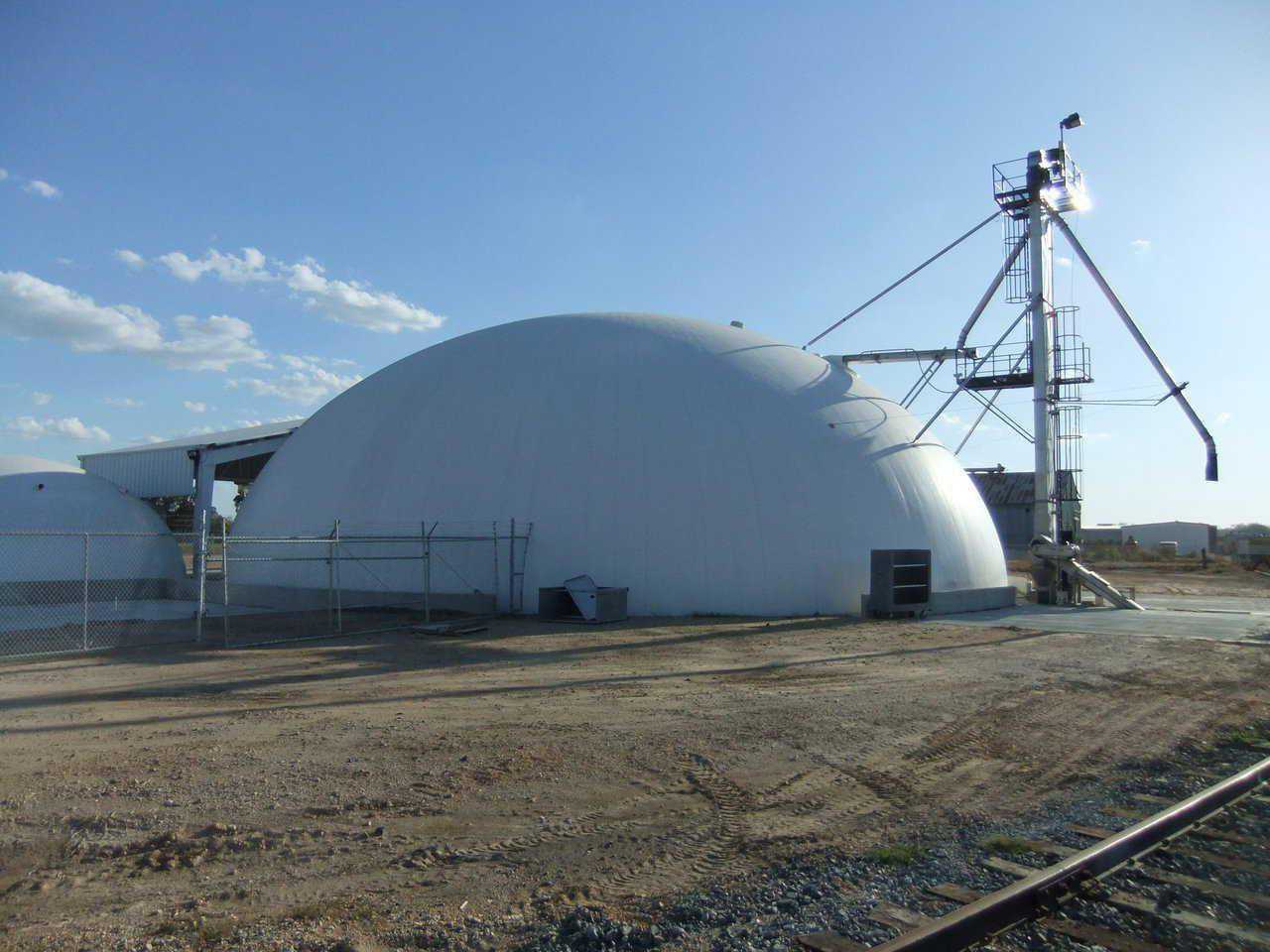Storing fertilizer has long given the dry bulk storage industry headaches. Among its problems is corrosion, ruining equipment and costing money. The Monolithic Dome is a structure solving this problem for the industry.
The industry magazine Dry Cargo International is featuring fertilizer storage domes in its November 2017 issue. The publication last featured Monolithic Domes in its February 2017 issue. The magazine has a circulation of more than 6,500 readers in the industry. Additionally, its website receives more than 130,000 hits a month.
The article is titled “Monolithic domes: safe fertilizer storage.” It discusses the advantages that Monolithic Domes offer the fertilizer storage industry. It uses a Monolithic Dome built in Bryan, Texas as one example of a successful dome fertilizer location.
Below are two excerpts from the article.
The reason a Monolithic Dome is an effective storage structure for fertilizer is because it is insulated. Gary Clark stated that because these domes are insulated buildings, “the fertilizer stores better.” He compared it to putting hot water into an insulated water bottle. After time, the water will remain hot inside the bottle. It is the same with fertilizer in a Monolithic Dome. “As temperature changes, fertilizer changes properties,” Clark stated. It can harden up and require time to break it up. Another possibility is for the fertilizer to liquefy, which can eat away concrete. “By keeping fertilizer in an insulated Monolithic dome, the product stays in a pure state,” Clark said.
Another issue is the corrosive nature of fertilizer, which can ruin the handling equipment. Apart from insulating the structure, another way to combat the corrosiveness is to air-condition the Monolithic Dome. The goal is to moderate the temperature and keep it at a temperate rate. “An air-conditioned building means we lower the humidity inside and remove the moisture,” Clark stated. Doing that removes the corrosiveness of the fertilizer, which means the equipment will last longer. “That is worth thousands,” Clark stated.
For more information about the magazine visit its website or follow the magazine on Twitter.

An image of the article in the magazine. (Dry Cargo International)

The second part of the article. (Dry Cargo International)
